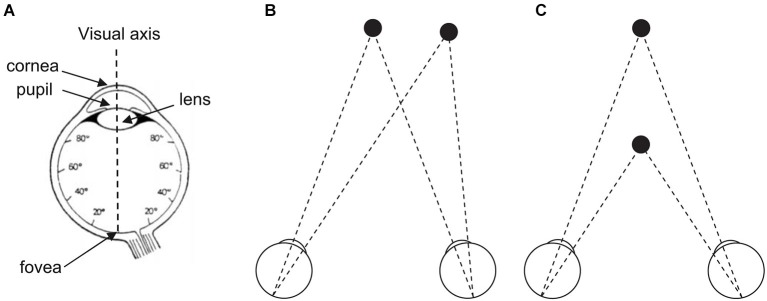Figure 1.

(A) The human eye and its visual axis. The fovea (1° to 2° of visual angle) contains high density of cones but no rod. Cone concentration decreases with increasing distance to the fovea and stabilizes for the rest of the retina. Rod concentration reaches its maximum at 20° of retinal eccentricity than decreases until the peripheral limit of the retina. (B) The two eyes move in direction thanks to a step (saccade) or smooth (pursuit) movement to foveate a target in eccentricity (to the left, to the right, up, down, or in any oblique direction). (C) The two eyes move in depth thanks to a step or smooth (vergence) movement to foveate a target in distance (at close or at far). (A) Adapted from Bagot (1999, p. 128, Figure 35) (© O.A. Coubard, with permission); (B,C) From O.A. Coubard.
